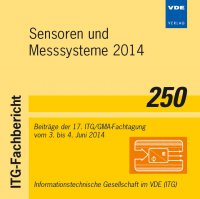A New Sensor for Viscosity and Fluid Density Measurement for Oil Well Drilling Applications
Konferenz: Sensoren und Messsysteme 2014 - Beiträge der 17. ITG/GMA-Fachtagung
03.06.2014 - 04.06.2014 in Nürnberg, Deutschland
Tagungsband: Sensoren und Messsysteme 2014
Seiten: 6Sprache: EnglischTyp: PDF
Persönliche VDE-Mitglieder erhalten auf diesen Artikel 10% Rabatt
Autoren:
Ochoa, Brian; Kruspe, Thomas (Baker Hughes INTEQ GmbH, Celle, Germany)
Goodbread, Joe (Viscoteers GmbH, Winterthur, Switzerland)
Inhalt:
This paper describes a novel density and viscosity sensor that measures properties of formation fluids with high accuracy and resolution. Dynamic viscosity (η) in combination with other fluid parameters such as density (ρ), sound speed, refractive index, absorption spectra and thermal conductivity provide a comprehensive characterization of the sample fluid. Estimating the formation permeability is critical for predicting the reservoir’s production potential. Mobility measurements performed on the formation using various downhole sampling tools can be used to calculate the permeability of the formation when accurate in-situ viscosity of the formation fluids is known. The sample fluid may be any combination of various molecular weight hydrocarbons, brine, oil- or water-based mud filtrate and gases. and the fluids typically have a viscosity in the range of 0.5 to 4 cP (mPa.s) but may be as high as 40 cP in heavy oils. Fluid density can range from 0.2 up to 1.5 g/cc. In addition, the fluids also may be conductive, and they can have partially non-Newtonian properties. For a sensor to be useable in a downhole formation sample and analysis tool, it must therefore have a large dyamic range with accuracy better than 10% of reading. It must also be capable of measuring at temperatures up to 175deg C and pressures exceeding 25 kpsi. In this paper, a new sensor is described that can meet all these requirements. It is a driven mechanical resonator whose resonant frequency and damping yield accurate values for the viscosity and density of a fluid in which it is immersed. The sensor was designed to be both highly accurate and sufficiently robust to withstand the temperature, pressure and drilling vibrations encountered in downhole logging. Viscosity is measured to within 0.1 cP for fluids less than 1 cP and 10% for all viscosities above 1 cP.. Density measurements are accurate to better than 0.01 g/cc. The sensor can be used for both wireline and logging-while-drilling (LWD) tools. The paper presents the measurement principles of the sensor and high-temperature and high-pressure qualification tests. The laboratory measurements of viscosity and fluid density conducted with the new sensor are shown for a variety of calibration fluids that are typical of downhole fluids collected by formation sampling tools.


